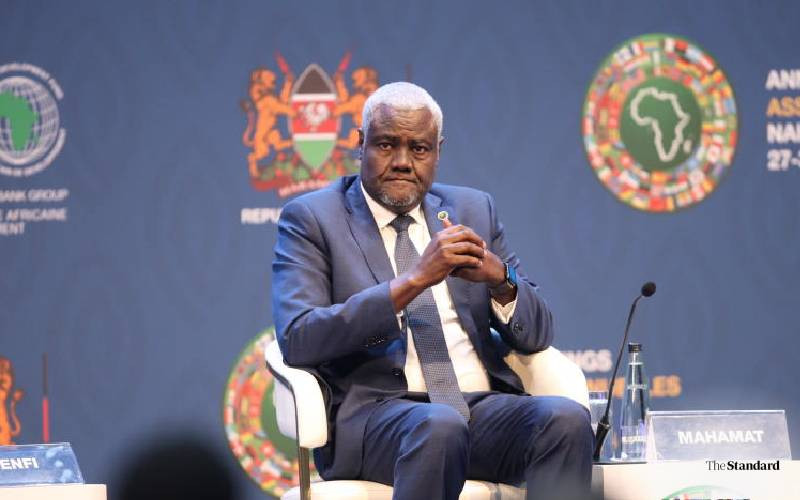Although it has no conventional air-conditioning or heating, The Eastgate Centre in Harare, Zimbabwe stays ventilated throughout the year, writes SONIA NJOGU
Easily one of Africa’s most celebrated buildings, The Eastgate Centre in central Harare owes its unique design to termites.
The shopping and office complex designed by architect Mick Pearce and opened in 1996 is ventilated and cooled by entirely natural means and was probably the first building in the world to use natural cooling to this level of sophistication.
The building provides 5,600 square metres of retail space, 26,000 square metres of office space and parking for 450 cars.
It is the country’s largest office and shopping complex and its use of biomimicry principles has made it an architectural marvel. Biomimicry refers to use of design solutions inspired by nature.
The Eastgate Centre was designed in conjunction with engineers at Ove Arup Associates and has no conventional air-conditioning or heating, yet it stays regulated year round with dramatically less energy consumption — it uses only ten per cent of the energy a typically air-conditioned building of its size would.
High-maintenance artificial air-conditioning systems are the typical solution but in using them, air is recycled, leading to high levels of air pollution in the building.
Passive cooling works by storing heat in the day and venting it at night as temperatures drop. At the start of the day, the building is cool, but during the day, machines and people generate heat and the sun shines.
The heat is absorbed by the fabric of the building, which has a high heat capacity because it is made of concrete, so that the temperature inside increases only slightly.
In the evening, the warm internal air is vented through chimneys, assisted by fans, but also rising naturally because it is less dense, and drawing in denser cool air at the bottom of the building.
Termite mound
After computer simulation and analysis, the engineering firm Ove Arup, gave Pearce the following stipulations for design: That no direct sunlight must fall on the external walls at all and the north faÁade, where the summer sun would hit, should have windows on only 25 per cent of the surface. Windows let in glare and heat, causing the interior to warm up.
They asked for a balance between artificial and external light to minimise energy consumption and heat gain.
They said all windows must be sealed because of noise pollution and unpredictable wind pressures and temperatures, and that they would have to rely on ventilation only through ducts.
The windows were fitted with adjustable blinds, but Pearce also used deep overhangs to keep direct sun off windows and walls, which are effectively recessed.
Stay informed. Subscribe to our newsletter
Deep eaves, a traditional solution in Africa, shade the walls completely from the high summer sun, while allowing the lower winter sun to warm the building in the morning.
Inside the termite mound, the insects farm fungus for consumption and this fungus must be kept at an optimum temperature or the termites will starve. They use the passive cooling mechanism.
Their mounds have flutes, which vent through the top and sides, and the mound itself is designed to catch the breeze.
By carefully adjusted convection currents, air is sucked in at the lower part of the mound, down into the chambers below ground and hot air rises through a channel to the peak of the termite mound.
The termites constantly dig new vents and plug old ones to regulate the temperature.
The Eastgate complex has a ventilation system, which operates in a similar way. Air drawn from outside is either warmed or cooled by the building mass, depending on which is hotter between the building concrete mass and the air.
It is then vented into the offices to regulate the temperature before leaving the building through chimneys at the top.
The complex system consists of two buildings side by side that are separated by an open space, which is covered by glass and open to the breezes. Air is drawn from the open space by fans on the first floor.
It is pushed up vertical ducts located in the central spine of each building. At each floor level, it enters a horizontal duct, which lies between the ceiling concrete slab of one office and the floor slab of the office above.
When the air leaves the horizontal ducts, it enters the office above through low-level grilles. This fresh air replaces stale air, which rises and exits through exhaust ports in the ceiling.
Pearce’s practice is in Harare and he specialises in buildings, which are low cost, low maintenance and have low environmental impact. In 2003, Pearce was awarded the Prince Claus Award for culture and development for his work on Eastgate.
The centre has won more than ten awards.
 The Standard Group Plc is a
multi-media organization with investments in media platforms spanning newspaper
print operations, television, radio broadcasting, digital and online services. The
Standard Group is recognized as a leading multi-media house in Kenya with a key
influence in matters of national and international interest.
The Standard Group Plc is a
multi-media organization with investments in media platforms spanning newspaper
print operations, television, radio broadcasting, digital and online services. The
Standard Group is recognized as a leading multi-media house in Kenya with a key
influence in matters of national and international interest.
 The Standard Group Plc is a
multi-media organization with investments in media platforms spanning newspaper
print operations, television, radio broadcasting, digital and online services. The
Standard Group is recognized as a leading multi-media house in Kenya with a key
influence in matters of national and international interest.
The Standard Group Plc is a
multi-media organization with investments in media platforms spanning newspaper
print operations, television, radio broadcasting, digital and online services. The
Standard Group is recognized as a leading multi-media house in Kenya with a key
influence in matters of national and international interest.





